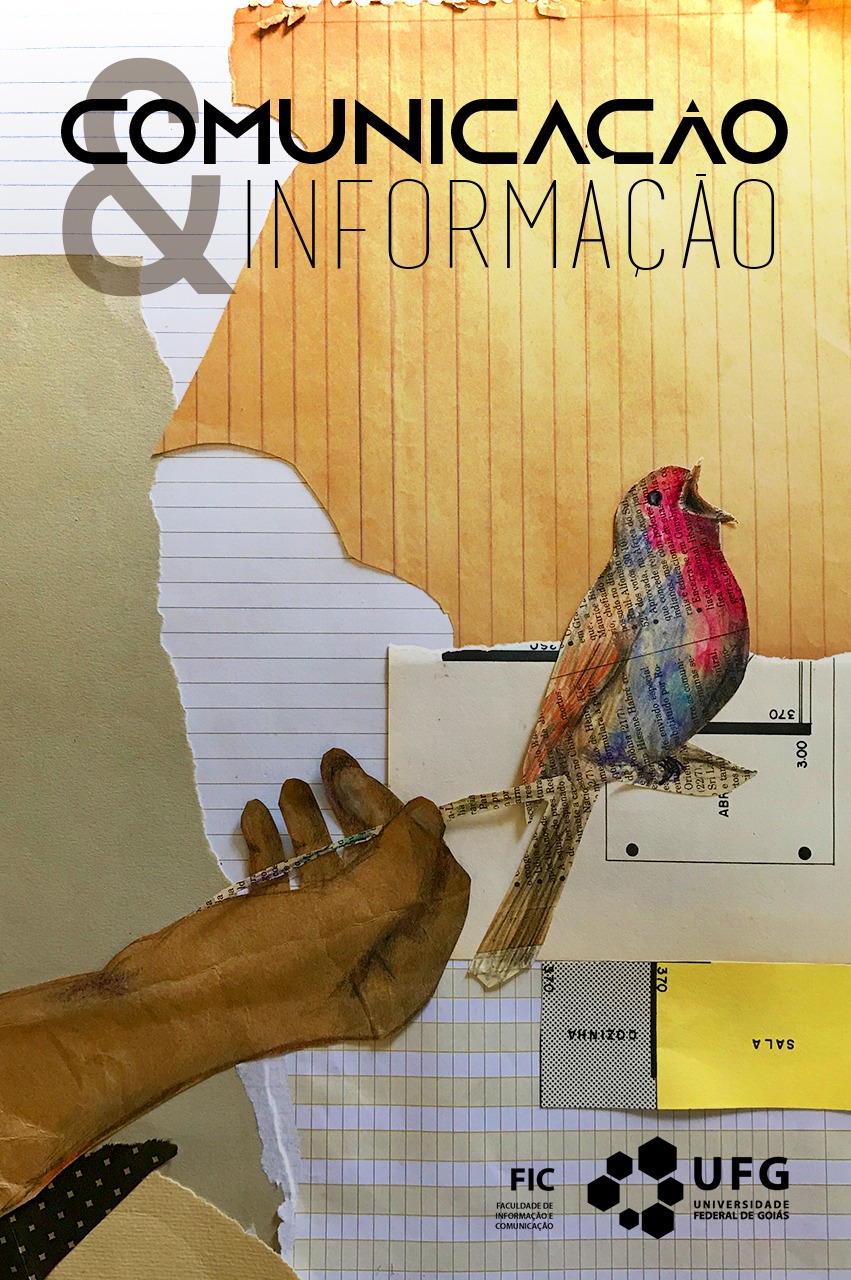O cinema-game
relações entre cinema expandido, interatividade e videogame
DOI:
https://doi.org/10.5216/ci.v23.66280Keywords:
Expanded Cinema, Interactivity, Video game, Life is Strange, BandersnatchAbstract
Aims to contextualize and dialogue with expanded cinema and the new media and technological possibilities, in addition to bringing new configurations of narratives, exemplifying and identifying interactive films that dialogue with video games, and games that dialogue with cinema. For this, the corpus used in the research includes the interactive film produced and shown by Netflix, Bandersnatch (2018) and the video game Life is Strange (2015). Putting into debate a cinema that disfigures classic cinema to insert new perceptions of production, exhibition and consumption, as well as the deconfiguration of the spectator and player himself, both take on other forms, since the media is no longer the same. Finally, we
point out attributes identified both in the film and in the game (already mentioned) that reveal
the convergence of these contents, in addition to exemplifying common points of interactivity present in the research corpus.
Downloads
References
A GRUTA. Direção: Filipe Gontijo. Brasil: Gontijo, 2008. Disponível em https://www.youtube.com/watch?v=zfxy9ZpzTfk. Acesso em: 10 dez. 2020.
ALCÂNTARA, Paulo; BRUNET, Karla. Notas introdutórias ao cinema interativo. Revista de Audiovisual Sala 206, n. 3, dez. 2013.
BIOPHILIA. Direção: Björk. Produtor: Scott Snibbe. Mundial: Universal Music, 2011. Álbum-aplicativo.
BLACK Mirror: Bandersnatch. Direção: David Slade. Produção: Russell McLean. Roteiro: Charlie Brooker. Reino Unido: Netflix, 2018. Streaming.
CANNITO, Newton. A televisão na era digital. Interatividade: convergência e novos modelos de negócio. Summus: 2010.
FERREIRA, Emmanoel M. Games narrativos: dos adventures aos MMORPGs. In: SEMINÁRIO JOGOS ELETRÔNICOS, 4., 2008, Salvador. Anais [...]. Salvador: UFBA, 2008.
GONÇALVES, Berenice Santos; SENS, André Luiz; HERMÓGENES, Fábio Alexandre. A Função estruturante do link em filmes e vídeos interativos. In: SUING, Abel; GARCIA, Aida Carvajal; SEDEÑO, Ana; BARCELLOS, Jefferson; RIVERA, Jéronimo; MORAIS, Osvando de; IRISARRI, Patricio; SARZI, Regilene; CASTRO, Sebastian; KNEIPP, Valquiria (org.). Narrativas imagéticas. Aveiro: Ria Editoral, 2019.
GRAU, Oliver. Arte virtual: da ilusão à imersão. São Paulo: Unesp; Senac, 2007.
GUATTARI, Félix. Towards a post-media era. Chimères, n. 28, primavera-verão 1996. 1a ed. 1990.
I‘M YOUR Man. Direção: Bob Bejan. Roteiro: Bob Bejan et al. EUA: Controlled Entropy Entertainment, 1998. 1 DVD (20 min).
INTERVALS of Silence. Direção: Deborah Lefkowitz. EUA: [s. n.], 1998. 1 vídeo (58 min).
JACOBY, Russell. Imagem imperfeita: pensamento utópico para uma época antiutópica. Rio de Janeiro: Civilização Brasileira, 2007.
JENKINS, Henry. Cultura da convergência. São Paulo: Aleph, 2008.
KRISTEVA, Julia. Introdução à semanálise. São Paulo: Perspectiva, 1974.
LAST Call by 13th Street. Direção: Milo. EUA: Film Deluxe Berlin, 2010. 1 vídeo (3 min). Disponível em https://www.youtube.com/watch?v=BRMNfwndtok&feature=emb_logo&ab_channel=FollowBandE. Acesso em: 10 dez. 2020.
LAST of Us part II. Direção: Neil Druckmann, Anthony Newman, Kurt Margenau. EUA: Sony; Naughty Dog, 2020. Jogo eletrônico.
LEVIN, Tatiana. Interação no webdoc: o lugar do espectador na narrativa digital. XVI ENCONTRO DA SOCIEDADE BRASILEIRA DE ESTUDOS DE CINEMA E AUDIOVISUAL, 16., 2012, São Paulo. Anais [...]. São Paulo: Centro Universitário Senac, 2012.
LIFE is Strange. Direção: Michel Koch, Raoul Barbet. Produção: Luc Baghadoust. EUA: Dontnod Entertainment, 2015. Jogo eletrônico.
LIMA, Isabela Vieira; FERREIRA, Helena Maria. Análise do jogo life is strange e suas potencialidades de interação com o sujeito-leitor/jogador. Revista Leia Escola, Campina Grande, v. 20, n. 1, 2020. ISSN 2358-5870.
MACHADO, Arlindo. Arte e mídia. Rio de Janeiro: Jorge Zahar, 2007.
MANOVICH, Lev. El cine, el arte del index. In: LA FERLA, Jorge. El medio es el diseño del audiovisual. Manizales: Universidad de Caldas, 2007.
MANOVICH, Lev. Soft cinema: navigating the database. Cambridge, Massachusetts: The MIT Press, 2005.
MANOVICH, Lev. The language of new media. Cambridge, Massachussetts: The MIT Press, 2001.
OUT my window. Direção: Katerina Cizek. Mundial: NFB, 2010. Disponível em http://outmywindow.nfb.ca/#/outmywindow. Acesso em: 10 dez. 2020.
PAZ, André; SALLES, Julia. Brasil, mostra a sua cara: aproximações ao cenário brasileiro de documentários interativos. Doc On-line - Revista Digital de Cinema Documentário, Covilhã, n. 18, p130-163, set. 2015.
PENAFRIA, Manuela. Webdocumentário - interatividade, abordagem e navegação. In: FIDALGO, António; CANAVILHAS, João (org.). Comunicação digital: 10 anos de Investigação. Lisboa, Portugal: Minerva, 2013. Disponível em: http://labcom.ubi.pt/livro/116. Acesso em: 10 dez. 2020.
PONG. Projetista: Allan Alcorn. Plataforma: Arcade. EUA: Atari. 1972. Jogo eletrônico.
RENÓ, Denis Porto. Uma linguagem para as novas mídias: a montagem audiovisual como base para a constituição do cinema interativo. 2007. 108 f.. Tese (Doutorado em Comunicação) – Universidade Metodista de São Paulo, São Paulo, 2007.
SIMONS, Jon. Complex narratives. New Review of Film and Television Studies, v. 6, n. 2, p. 111-126, 2008.
SHAW, Jeffrey. O cinema digitalmente expandido: o cinema depois do filme. In: LEÃO, Lucia (Ed). O chip e o caleidoscópio. São Paulo: SENAC, 2005.
SHUTTER Interface. Direção: Paul Sharits. EUA: [s. n.], 1975. 1 vídeo (3 min).
SWITCHING. Direção: Morten Schjødt. Roteiro: Filip von Spreckelsen. Dinamarca: Controlled Entropy Entertainment, 2003. DVD.
TRASFERETTI, Rodrigo; SANTOS, Roberto Elisio. Inovações tecnológicas e hibridismos no album-aplicativo Biophilia, de Bjork. Revista Comunicação e Informação, Goiânia, GO, v. 20, n. 2, p. 113-131, jun./jul. 2017.
VANDERBEEK, Stan. Movie drome. Cultureintercomfbaul, 15 mar. 2011.Disponível em:
https://cultureintercomfbaul.wordpress.com/2011/03/15/movie-drome-stan-vanderbeek/. Acesso em: 17 out. 2020.
VILCHES, Lorenzo. A migração digital. São Paulo: Loyola, 2003.
WEIBEL, Peter: The post-media condition: Neue Galerie Graz, Áustria, p. 6-13, 2005. Disponível em: https://www.museum-joanneum.at/en/neue-galerie-graz/exhibitions/exhibitions/events/event/1906/postmedia-condition. Acesso em: 20 out. 2020.
YOUNGBLOOD, Gene. Expanded cinema. New York: P. Dutton, 1970.
ZEN for film. Direção: Nam June Paik. EUA: Filmmakers' Cinematheque, 1964. 1 DVD (4 min).
Downloads
Published
How to Cite
Issue
Section
License
Os autores dos trabalhos publicados na revista Comunicação e Informação retêm os direitos autorais sem restrições e concedem à revista o direito de primeira publicação, com o trabalho simultâneo licenciado sob a Licença Creative Commons Atribuição-NãoComercial que permite o compartilhamento do trabalho para fins não comerciais com reconhecimento da autoria e o privilégio de publicação primeiramente por esta revista. Caso o texto venha a ser publicado posteriormente em outro veículo, solicita-se aos autores informar que o mesmo foi originalmente publicado como artigo na revista Perspectiva, bem como citar as referências bibliográficas completas dessa publicação.
Os direitos autorais dos artigos pertencem aos autores e o conteúdo dos artigos assinados é de responsabilidade exclusiva dos autores.
A revista se reserva o direito de efetuar, nos originais, alterações de ordem normativa, ortográfica e gramatical, com o intuito de manter o padrão culto da língua, respeitando, porém, o estilo dos autores.
A revista também se reserva o direito de traduzir o artigo, no todo ou em parte, para o inglês ou para o português, dependendo do idioma em que o artigo tenha sido escrito originalmente.



